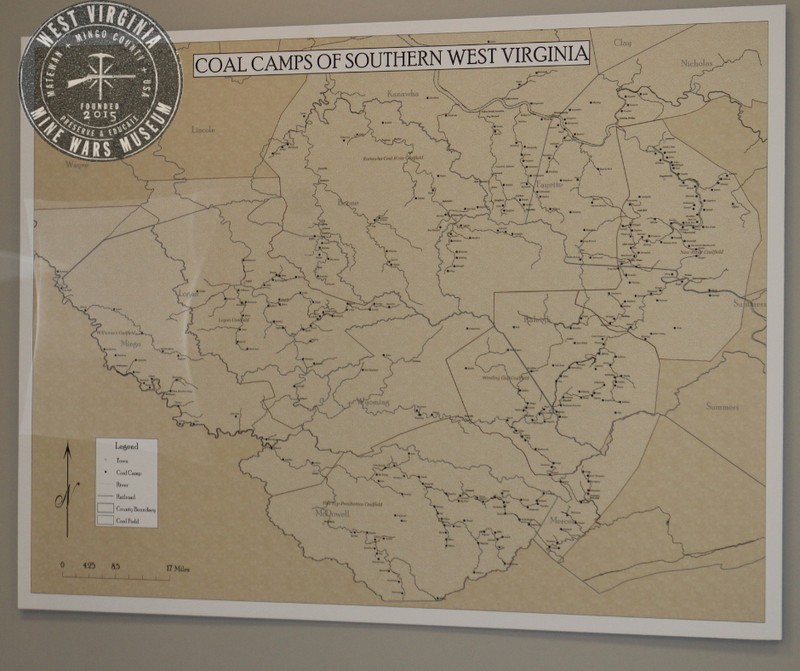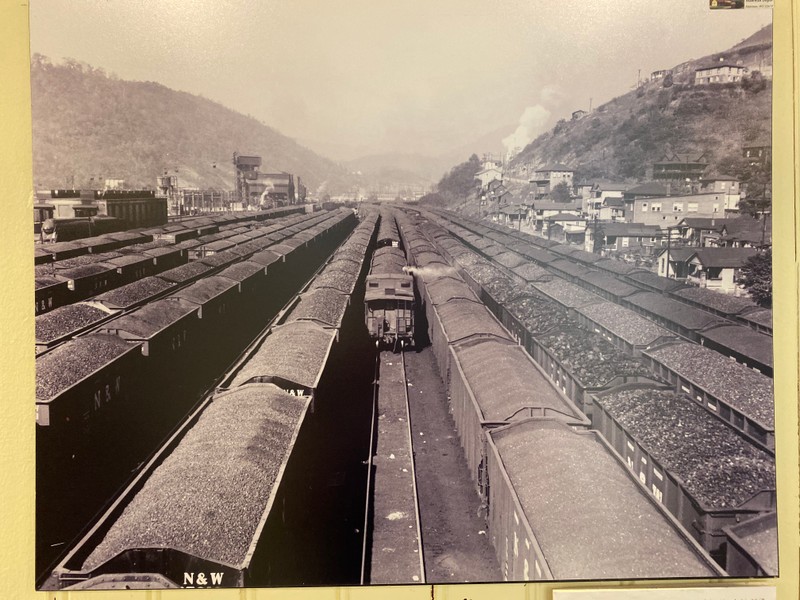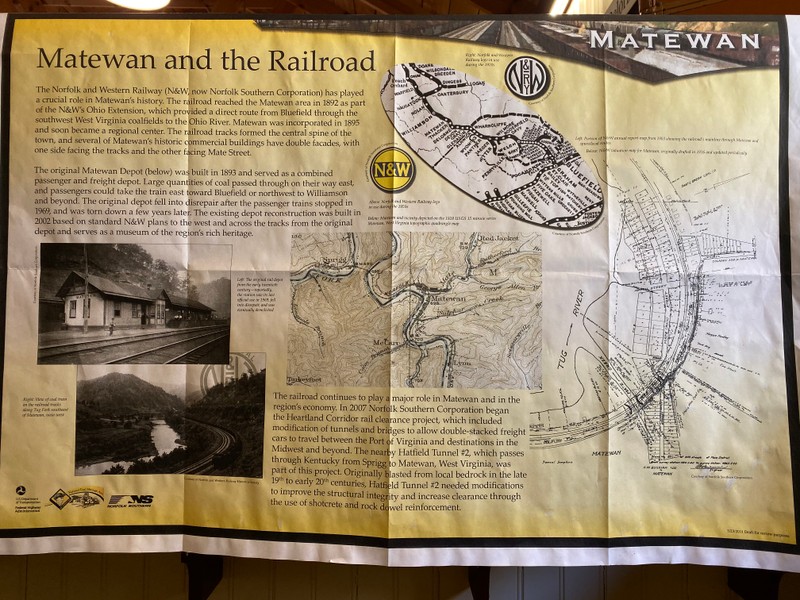Norfolk and Western Railroad in Matewan, WV
Introduction
Text-to-speech Audio
Images
Coal Camps of Southern West Virginia

Norfolk and Western

National Coal Heritage Presents Matewan and the Railroad

Backstory and Context
Text-to-speech Audio
It didn’t take long for Matewan to become a thriving and incorporated town when Norfolk and Western first laid down their track. Matewan was incorporated in 1895, and soon became a regional center, providing a direct route from the town of Matewan to Bluefield. Between 1890 and 1920, the overall population of southern West Virginia quadrupled. This was the case for many towns in Appalachia after the railroad emerged. Where did these people come from, and why?
Coal development, coupled with the railroad and the industrial revolution, would explain the sudden growth spurt in towns like Matewan. Like Stan Cohen explains in King Coal, "[a]s more trackage was laid following the Civil War, there was a corresponding increase in the volume of coal mined and shipped from the state."
Indeed, the expansion of the railroad set the stage for coal companies to perform their work. Coal companies would recruit workers from across the world and nation--African Americans from the U.S. South, Hungarians, Italians, and more--and bring them to Mingo County to work in the coal mines. Mine owner Justus Collins encouraged mine operators to hire a “judicious mixture” of races and ethnicities to curb unionization and collective action on behalf of the workers.
Coal companies would build an entire town for their workers, and the closest company town to Matewan would be Stone Mountain Coal Company; however, there are remnants of company towns still scattered throughout West Virginia. Many of these workers would arrive to coal company camps in a passenger train, and they’d discover that they were already indebted to their employer’s for their ride into town. What’s more, coal miners had to also pay for their own living expenses and tools to work, such as the company doctor, food, dynamite, and feed for the mule.
The Norfolk and Western Railroad had many contributions to the fabric of United States history, but here in Matewan, the railroad opened the southern coalfields up for business, provided transportation in and out of these hills, and exported coal to eastern and world markets.
Sources
National Historic Landmark Nomination, West Virginia Department of Arts, Culture, and History. February 18th 1997. Accessed September 10th 2019. http://www.wvculture.org/shpo/nr/pdf/mingo/93000303.pdf.
Sullivan, Ken "Justus Collins." e-WV: The West Virginia Encyclopedia. 05 October 2012. Web. 10 September 2019.
Savage, Lon K. . Thunder in the Mountains: The West Virginia Mine Wars 1920-21. South Charleston, WV. Jalamap Publications, Inc. , 1984.
Cohen, Stan. King Coal: A Pictorial Heritage of West Virginia Coal Mining . Charleston, WV. Quarrier Press, 1984.
Bailey, Rebecca J.. Matewan Before the Massacre: Politics, Coal, and the Roots of Conflict in a West Virginia Mining Community. Morgantown, WV. West Virginia University Press, 2008.
The Feud. MacLowry, Randall. USA. American Experience, 2019. Public Broadcasting Service (PBS).
Collection of the West Virginia Mine Wars Museum
Collection of the Matewan Depot Replica and Museum
Collection of the Matewan Depot Replica and Museum
